Keto Diet: A Beginner's Guide
Keto Diet:
A Beginner's Guide
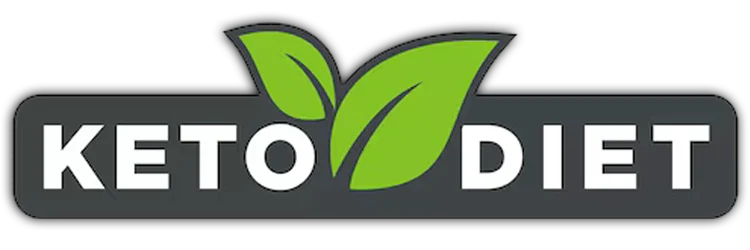
The Origin
The origins of the ketogenic diet, more commonly known as the keto diet. You've probably heard about it mainly in the context of weight loss, but what's the real story behind this high-fat, low-carb eating plan? Let's take a trip back in time to find out! [1]
Rewinding all the way back to the 1920s, we discover that the keto diet was actually developed for a very different purpose. During this time, doctors were searching for effective treatments for children with epilepsy, particularly those who weren't responding to conventional therapies. They made a remarkable observation: fasting, meaning not eating for a period, often led to a decrease in seizures for these children. However, you can't just tell kids not to eat for long stretches! [1]
This dilemma prompted doctors to ask a pivotal question: Could they mimic the benefits of fasting while still allowing kids to consume food? This inquiry ultimately led to the invention of the ketogenic diet, which emphasizes high fat and very low carbohydrates. The primary goal is to shift the body into a metabolic state known as ketosis.
To break it down further, typically, our bodies use glucose from carbohydrates as their main source of energy. However, when we drastically reduce carbohydrate intake, our bodies must adapt. They switch to burning fat for fuel instead, leading to the production of compounds called ketones. This metabolic shift is what allows the keto diet to serve its original therapeutic purpose.

Russell Morse Wilder
A physician, diabetologist, and epileptologist, Russell Morse Wilder is recognized as one of the originators of the "classic keto" diet. His work laid the foundation for its use as a treatment for epilepsy, establishing the diet as a legitimate medical intervention.
Fast forward to the 1950s, and the landscape of epilepsy treatment began to evolve. With the arrival of new anti-epileptic drugs, managing the condition became simpler. Consequently, while the ketogenic diet remained an option, it gradually took a backseat to these emerging treatments.
But the story doesn't end there! In the 1970s, a doctor named Robert C. Atkins shook things up by bringing the keto diet to the forefront once more. His focus shifted from epilepsy to weight loss and increased energy. This marked a significant transition in public perception of the diet, transforming it from a specific medical treatment into a popular method for enhancing overall health and wellness. [1]

Robert Coleman Atkins
A cardiologist known for revolutionizing the dietary landscape with his controversial and influential high-protein, low-carbohydrate approach to weight loss. His work popularized the ketogenic diet for a broader audience seeking health and wellness improvements.
Today, the keto diet maintains its popularity as a weight loss strategy. However, researchers are also investigating its potential benefits in managing other health conditions, such as type 2 diabetes and neurological diseases like Alzheimer's and Parkinson's. While there is promise, more research is needed to fully understand the keto diet's impact and potential applications. [1]
So, the keto diet has come a long way, from a medical solution for epilepsy to a popular lifestyle choice for many looking to enhance their health and wellness.
Understanding the Keto Diet
Understanding
the Keto Diet

Before jumping into keto, it's important to understand how it works. Learn how your body shifts from carbs to fat for energy and the simple ways to check if you've entered ketosis.
How Your Body Typically Gets Energy
So, typically, your body prefers glucose for energy. When you eat carbs, think bread, rice, or even fruits, your body breaks those down into glucose, which is like your fuel. It's a pretty straightforward process, much like a car that runs smoothly on regular gasoline. [2]
The Keto Twist
Now, here's where the keto diet takes a turn. You drastically cut down on carbs, usually to less than 50 grams a day. This big drop forces your body to switch gears and find a new way to fuel itself. [2]
The Shift to Fat-Burning
With fewer carbs, your glucose levels drop, and your body starts to look for alternative fuel sources. Guess what it turns to? Fat! Instead of relying on glucose, your body begins to break down stored fat to create energy. This whole transition is called ketosis. [2]
Ketosis Explained
When you enter ketosis, your body starts breaking down fat and producing something called ketones. These ketones become your new go-to energy source, taking over the role that glucose used to play. It's pretty impressive how your body can adapt to changes like this! [2]
Checking for Ketosis
Now, you might be wondering, "How do I know if I'm in ketosis?" Luckily, there are a few easy ways to check.
Urine Test Strips
One popular method is using urine test strips. These strips change color based on how many ketones are in your urine, giving you a simple way to see where you stand.
Breath Analyzers
Another option is breath analyzers, similar to what police use for alcohol tests. They measure the ketones in your breath, which is a non-invasive way to check up on your state.
Blood Ketone Meters
For those who want a more accurate reading, blood ketone meters are the way to go. These are like blood sugar monitors; they need a small blood sample, but they provide precise ketone levels.
Benefits of the Keto Diet
Benefits of
the Keto Diet

Why do so many people turn to the keto diet? With a range of potential health benefits, let's explore what makes this approach so effective.
Weight Loss
Weight loss is one of the most discussed benefits of the keto diet. The process works by drastically reducing carbohydrate intake, which forces the body to switch from using glucose for energy to using fat. This metabolic state is called ketosis, essentially turning your body into a fat-burning machine. However, it's important to note that much of the initial weight loss is due to water weight loss,as cutting carbs depletes glycogen stores, which are associated with water retention. [3]
Improved Focus
In addition to weight loss, many people report improved mental clarity and focus while on the keto diet. Interestingly, this raises questions about how different energy sources impact our cognitive functions. The shift to fat for fuel might contribute to enhanced concentration and clearer thinking, suggesting a deeper connection between our diet and mental performance. [3]
Steady Energy Levels
Another commonly mentioned benefit is the experience of more consistent energy levels. High-carb diets can lead to energy spikes and crashes, but the keto diet offers a more stable energy supply, reducing the likelihood of afternoon slumps. This is attributed to the sustained release of energy from fat metabolism. [3]
Blood Sugar Control
Blood sugar control is another critical advantage of the keto diet. By reducing carbohydrate intake, you limit the amount of glucose entering your bloodstream, leading to more stable blood sugar levels. This is particularly beneficial for individuals with or at risk of type 2 diabetes, as maintaining steady blood sugar can help prevent dangerous spikes and drops. [3]
Reduced Inflammation
Lastly, reduced inflammation is an additional potential benefit associated with the keto diet. While research is ongoing, some studies suggest that this diet may help lower inflammation throughout the body, which is significant since chronic inflammation is linked to numerous health issues. [3]
Getting Started with the Keto Diet
Getting Started with
the Keto Diet
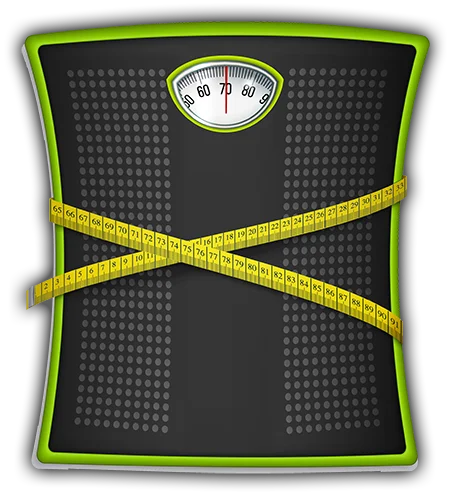
Starting a ketogenic diet might seem a bit overwhelming at first,
but with a little planning, it can be a lot easier.
Starting a ketogenic diet might seem a bit overwhelming at first, but with a little planning, it can be a lot easier.
Understanding Your Macros
First up, let's talk about macros. Macro is short for macronutrients, and these include the three main components of your diet: fat, protein, and carbohydrates. For the standard ketogenic diet (or SKD), the goal is to get around 70-80% of your daily calories from fat, 20-25% from protein, and just 5-10% from carbohydrates. [4]
Now, there are different ways to do keto, too. You've got the targeted ketogenic diet (TKD), which allows you to eat a few extra carbs around your workout times to give you a little energy boost. It's perfect if you're active and need that extra fuel. [5]
Then there's the high-protein ketogenic diet (HPKD), which increases your protein intake to about 35%, while fat drops down to around 60%, and carbs stay low at about 5%. If your focus is on building muscle, this could be a great option for you. [4]
If this all sounds a bit overwhelming, don't worry! There are plenty of online calculators that can help customize these targets to fit your body and your goals. But, for just getting started, use the SKD numbers as your guiding principle.
| Keto Diet Macronutrient Ratio | Fat | Protein | Carbs |
|---|---|---|---|
| Standard Ketogenic Diet (SKD) | 70% | 20% | 10% |
| Targeted Ketogenic Diet (TKD) | Varies, with carb intake around intense workouts | Varies | Varies, with added carbs |
| High-Protein Ketogenic Diet (HPKD) | 60% | 35% | 5% |
Planning Your Meals
Next up, let's talk meal planning. This is where the fun begins! You'll want to fill your plate with high-fat, low-carb foods. Think about incorporating a variety of fish, eggs, and full-fat dairy like cheese and heavy cream are your friends here. You'll also want to use healthy oils like olive oil and avocado oil. Don't forget about nuts and seeds. And of course, low-carb veggies like leafy greens should be staples in your diet.
But there are definitely some foods to avoid. Say goodbye to sugary treats like sodas, candies, and desserts. Grains like bread, pasta, and rice are out, along with starchy veggies such as potatoes and corn. Most fruits are also off the table because of their natural sugars. Planning your meals ahead of time can make sticking to these guidelines so much easier.
Staying Hydrated
Now, let's move on to something super important: hydration. When you're starting the keto diet, make it a goal to drink around 1.6 liters per day for women (about 6.5 cups) and 2 liters for men (about 8.5 cups) of water every day. Here's why: as your body shifts to using fat for energy, it produces ketones that actually act as a diuretic, making you lose more fluids. So, staying hydrated isn't just good practice, it's key to helping your body through this transition.
Tracking Your Progress
As you go along, keeping track of your progress can be really beneficial. You can start by simply noticing how your clothes fit or keeping an eye on changes in your weight. It's also helpful to keep an eye on your energy levels; many people find they have more stable energy on keto, which is a nice bonus!
If you want to get a bit more technical, some folks use ketosis strips or blood ketone meters to check if they're in ketosis. Ultimately, find a tracking method that resonates with you, whether it's with apps, journaling, or simple observation. Keeping track can boost your motivation and help you see how far you've come.
Prepare for the Keto Flu
Finally, let's discuss something you might hear referred to as the “keto flu.” Don't worry; it's not an actual flu! It refers to some symptoms that can pop up as your body adjusts from burning glucose to using ketones for energy. During this adjustment, you may feel tired, have headaches, or even experience nausea.
The good news is that these symptoms usually don't last too long. To make things easier, remember that as you lose that extra water weight, you're also losing important electrolytes, like sodium, potassium, and magnesium. These minerals are crucial for keeping your fluids balanced and your nerves functioning properly.
So, staying well-hydrated is key. Make sure you get enough rest, and consider incorporating foods rich in electrolytes or even taking supplements if needed. These steps can help minimize any initial discomfort and help you get through this transition smoothly.
Foods to Enjoy on the Keto Diet
Foods to Enjoy on
the Keto Diet
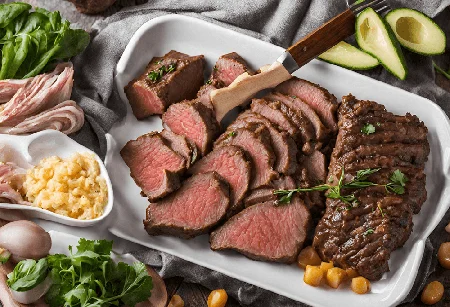
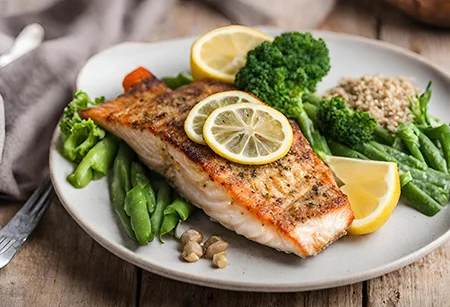
So, you're wondering what you can actually eat on a keto diet?
Let's break it down!
There's a fantastic variety of proteins you can enjoy, starting with poultry like chicken and turkey. You can also indulge in red meats such as beef and pork, not to mention all the seafood and fish options available. This really gives you a lot of flexibility when it comes to your protein sources. And let's not forget about eggs, they're a true staple and an absolute must for anyone on keto!
Now, when we talk about staples, healthy fats are super important on the keto diet. You've got plenty of options here! Think about butter, olives, avocados, and different plant oils. Plus, adding a little splash of lemon juice or vinegar can really enhance the flavors of your meals without overpowering your carb limit.
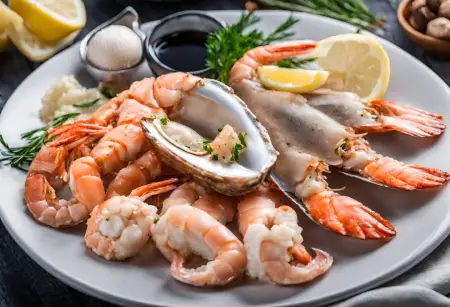
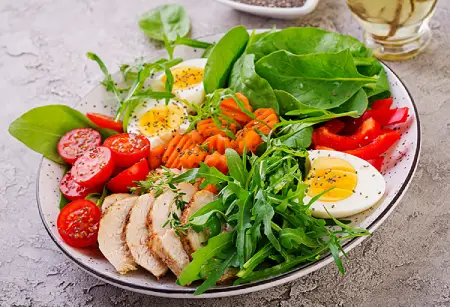
Next up are low-carb vegetables, which are basically your best friends on keto. Leafy greens like lettuce, kale, and spinach, along with other non-starchy veggies, can be enjoyed in generous amounts. Load up your plate!
Some foods need moderation. Butter is a great fat, but watch your overall intake. The same goes whole milk, and yogurt, due to their natural sugar levels. Hard cheese is also on the list, you really want to watch how much you eat. Try to stick to about 100 grams per day. Unsweetened coffee and tea are fine, and moderate amounts of wine or hard liquor are acceptable.
Be mindful of sweet potatoes, peas, beets, carrots, and corn; these tend to have higher carb counts than other veggies. You don't have to cut them out completely, but it's a good idea to limit how much you consume.
Foods allowed in large quantities on the ketogenic diet include: [6]
- Poultry
- Meat
- Seafood
- Fish
- Eggs
- Olives
- Avocado
- Vegetal oils
- Lemon juice
- Vinegar
- Low-carb vegetables
Foods to be consumed with moderation are: [6]
- Butter
- Hard cheeses
- Whole milk
- Whole milk yogurt
- sweet potatoes
- Peas
- Beets
- Carrots
- Corn
- Unsweetened coffee
- Unsweetened tea
- Wine and hard liquor
Choosing the right kinds of fat is crucial. Be cautious with omega-6 fatty acids, which are found in oils like safflower, grape, soy, corn, wheat germ, and sunflower oil. Instead, aim for healthier fats, think monounsaturated fats from nuts, olive oil, and avocados. Saturated fats from high-fat dairy and fatty cuts of meat are also good to include in your diet.
And don't forget about coconut oil! It's especially beneficial for keto because it converts into ketones easily. Also, make sure you're not overlooking omega-3 fatty acids. They're essential for your overall health and can be found in fatty fish like salmon, as well as in flaxseed and linseed.
Foods to Avoid on the Keto Diet
Foods to Avoid on
the Keto Diet
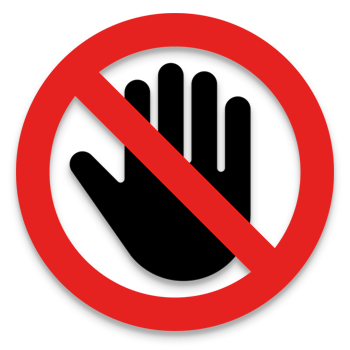
Let's break down what you absolutely can't eat if you're serious about maintaining ketosis. Consider this your ultimate keto avoid list.
Sweet Temptations First up, sugar is your number one enemy. We're talking about more than just the obvious culprits like cookies and pastries. Honey, jam, syrups, and chocolate are all off-limits. Watch out for sneaky sweetened sauces that can quickly add up your carb count. Flavored yogurts might seem harmless, but they're often sugar bombs in disguise.
Grains and Starches Potatoes might be a vegetable, but they're a keto nightmare due to their high starch content. Bread, cereal, and any starchy foods are completely out. Why? They break down into glucose, which immediately disrupts ketosis.
You might find it surprising, but most fruits aren't keto-friendly due to their high natural sugar content. Berries are an exception and can be enjoyed in moderation since they typically have fewer net carbs (total carbs minus fiber). However, sugary fruits and dried fruit products are definitely a no-go. Fruit and vegetable juices are off the table as well; they lack the fiber found in whole fruits and deliver a sugar rush instead.
When it comes to dairy, not all options are suitable for keto. Avoid fresh and soft cheeses, as they tend to have higher lactose (milk sugar) content. Opt for harder cheeses instead.
Legumes and Problematic Vegetables Beans and lentils are completely off the table due to high carb content. Some vegetables require caution too - beets, corn, and carrots are higher in sugars and starches, which can quickly derail your keto efforts.
Now regarding beverages, remember that fruit and vegetable juices are a no-go, and soft drinks are off-limits due to their excessive sugar content.
Lastly, plant-based milks can sometimes be misleading. Although they're often marketed as healthy alternatives, keep an eye out for those with high carb content or added sugars, particularly soy milk and certain almond milks. Always check the labels for hidden carbs and added sugars.
To keep your body in ketosis, it's best to avoid certain foods, including: [7]
To keep your body in ketosis, it's best to avoid certain foods, including: [7]
- Sweet products
- Sugar
- Potato
- Legumes
- Fresh cheese
- Soft-paste cheese
- Fruits (except berries)
- Bread
- Sweet fruit compotes
- Cereals
- Starchy foods
- Cookies
- Pastries
- Viennese pastries
- Fruit juices
- Vegetable juices
- Honey, jams, syrup
- Soft drinks
- Chocolate
- Sweetened sauces
- Flavored yogurts
- Sweet vegetables
- Plant-based milks
Keto Diet: Essential Tips
Keto Diet:
Essential Tips

Want to make keto easier? A few helpful tips can guide you past common mistakes and keep you on track. Here, you'll find useful guidance to keep your journey smooth, enjoyable, and set you up for success!
Take Your Time
Alright, first things first, don't feel like you need to jump into keto all at once. Honestly, one of the best things you can do is ease into it. Start gradually by cutting down on carbs over time rather than slashing them overnight. This gives your body a chance to adjust to burning fat instead of sugar for energy, which can actually take a little while. By starting slow, you can help prevent those uncomfortable side effects that often come with a sudden switch to keto.
Prepare Meals Ahead
Let's talk meal preparation, it's a big deal on keto. You've probably heard that planning meals ahead of time is helpful in general, but on keto, it's almost essential. Since you're aiming for specific ratios of fat, protein, and carbs, having your meals ready can make everything way easier. Imagine you're running low on time and feeling hungry. You have a choice: grab something quick that might kick you out of ketosis or reach for a delicious, keto-friendly meal that you already prepped. By planning ahead, you set yourself up for success and take out all the guesswork.
Stay Active
Next up, moving your body. Getting some exercise while you're on keto can really boost your results, and more importantly, help you feel your best. You don't have to go full gym rat or anything, but a mix of cardio (like walking or biking) and some strength training is the sweet spot. That combo helps you stay energized, supports muscle health, and just makes the whole keto experience more effective overall.
Listen to Your Body
Now here's something that's super important. Keto isn't a one-size-fits-all kind of diet. Just because something works great for someone else doesn't necessarily mean it'll feel right for you. So pay attention to how you're feeling. Are you sleeping well? Do you have steady energy? How's your digestion? All of these little signs are your body's way of telling you what's working, and what's not. The more you notice, the better you can adjust the diet to suit you.
Look for Support
Lastly, don't forget that you don't have to do this alone! One of the biggest advantages you can have is a solid support system. Look for online communities where folks share their experiences, recipes, tips, and motivation. If you have friends who are also interested in keto, talking about your journeys and learnings with each other can be incredibly inspiring. It's like having a team cheering you on as you navigate this new path!
Duration of the Keto Diet
Duration of
the Keto Diet
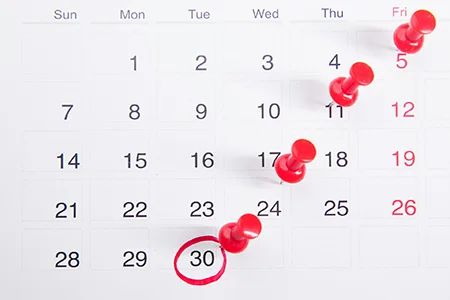
How long you should stick with the keto diet? You know, when we talk about keto, it's really more about adopting a whole new lifestyle rather than just jumping into a temporary diet. There's no strict timeline for how long you should be on it for weight loss; it really depends on what works best for you. [8]
Now, some people follow the keto diet for medical reasons, and in those cases, they might stick with it for just a few weeks or even for several years. Generally, doctors agree it's safe to follow long-term if your blood tests and weight stay healthy. However, it's important to remember that the keto diet isn't for everyone.
One thing that can be tough about the keto diet is its strict rules. Unlike many other diets, there's really no such thing as a "cheat meal" on keto. If you indulge in some carbs, like that tempting pasta or a sweet treat, you'll fall out of ketosis, which means you'll have to start the process all over again.
Because of this, we recommend chatting with a healthcare professional before diving into the keto diet, especially if you're thinking about sticking with it for the long haul. While committing to the keto lifestyle can be super rewarding, it definitely takes dedication and careful attention to your health and nutrition along the way.
Common Keto Diet Mistakes

Starting the keto diet sounds simple, just cut carbs and eat more fat, right? Well, not quite. Many people run into common mistakes that can slow progress or make the transition harder than it needs to be. The good news? You can avoid these pitfalls by knowing what to watch out for!
Not Eating Enough Fat
Let's kick things off with fat. For a lot of people, this can feel like a mental roadblock. We've been told for years to steer clear of fat and stick to low-fat options. But when you're on keto, fat is your best friend! It's your main energy source. That means you really need to eat enough healthy fats to keep your body in that fat-burning zone called ketosis. So, don't hold back on adding things like avocados, olive oil, nuts, and seeds to your meals. If you're feeling tired or a bit off while on keto, check your fat intake first; you might just need a little more. [9]
Hidden Carbs
Now, hidden carbs can be quite the tricksters. You might be doing a great job dodging obvious carbs like bread and pasta, but carbs can sneak up on you in unexpected places, like sauces. A lot of sauces, even those labeled as sugar-free, can be loaded with hidden starches. And processed foods can be another trap, as they usually have fillers and additives that rack up your carb count. So, make it a habit to read those labels carefully. Be cautious of anything that tastes unusually sweet or has a strange thick texture. These could be signs of hidden carbs. [9]
Hydration
Hydration time! Staying well-hydrated is important for everyone, but it's even more crucial on keto. When you cut back on carbs, your body handles fluids differently. Drinking plenty of water is key to avoiding the infamous keto flu, which can leave you feeling tired, giving you headaches, and generally making you feel unwell. Plus, drinking enough water helps balance your electrolytes and keep your digestion running smoothly. So, keep that water bottle close and make sure you're sipping throughout the day! [9]
Protein Intake
Here's a surprising twist: you can actually eat too much protein on keto! I know it sounds odd because we often think of protein as a weight-loss ally, but here's the deal, if you consume excessive protein, your body can convert some of that into glucose through a process called gluconeogenesis. And remember, glucose is what we're trying to limit on keto. Instead of focusing solely on protein, aim for a moderate intake while putting healthy fats first. It's all about striking that balance. [9]
Electrolytes
Lastly, let's not forget about electrolytes. These important minerals, like sodium, potassium, and magnesium, are essential for lots of bodily functions. When you go keto, you tend to lose electrolytes through your urine more quickly because your body is burning fat and releasing stored water, which includes those minerals. If you don't replace them, you might experience side effects like muscle cramps, fatigue, headaches, and in some cases, heart palpitations. So, keep an eye on your electrolyte levels by eating foods that are rich in them, like leafy greens, avocados, and nuts. And if needed, think about adding a supplement to your routine. [9]
Frequently Asked Questions (FAQs)
How Long Does It Take to Enter Ketosis?
So, typically, it takes about 2 to 4 weeks for your body to fully enter ketosis. The good news is that you can monitor this process easily using simple urine test strips available at most pharmacies.
Is meal planning important on a ketogenic diet?
Definitely. Having a solid meal plan is key to success on the keto journey. It helps ensure you're getting all the nutrients you need while keeping your carb intake in check. Planning ahead also makes it way easier to resist unhealthy food choices and stick to your goals.
Can I Drink Alcohol on the Keto Diet?
Yes, you can enjoy a drink in moderation on keto Just opt for low-carb options like dry wines, vodka, gin, or tequila, and low-carb beers. Try to avoid sugary cocktails and high-carb drinks to stay in ketosis.

